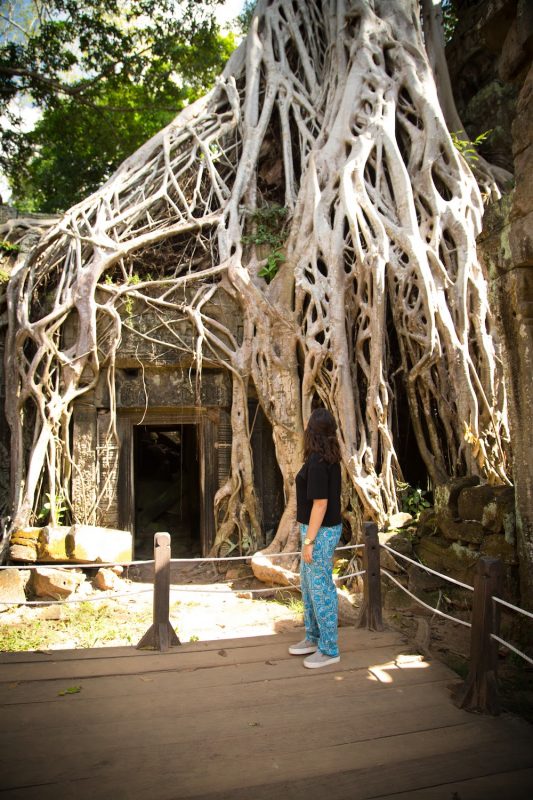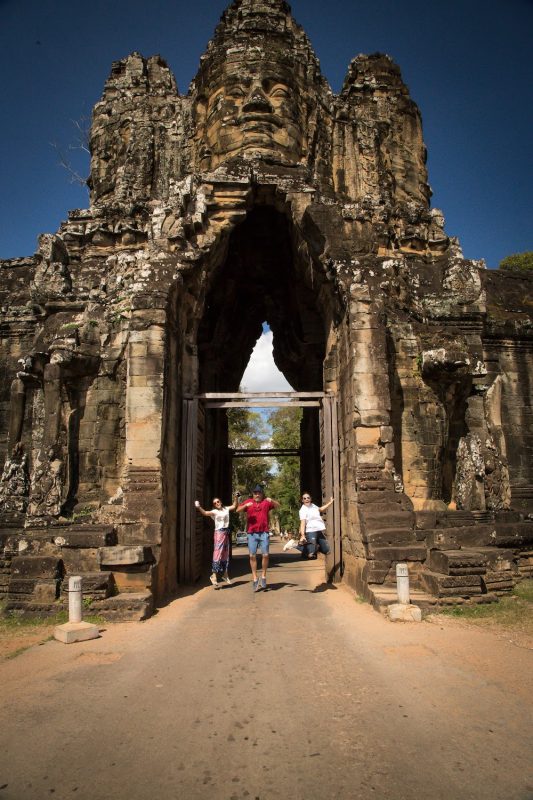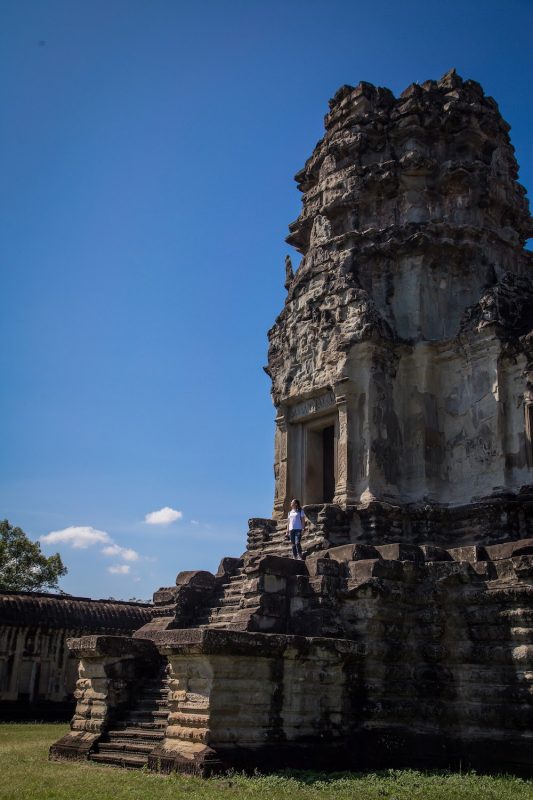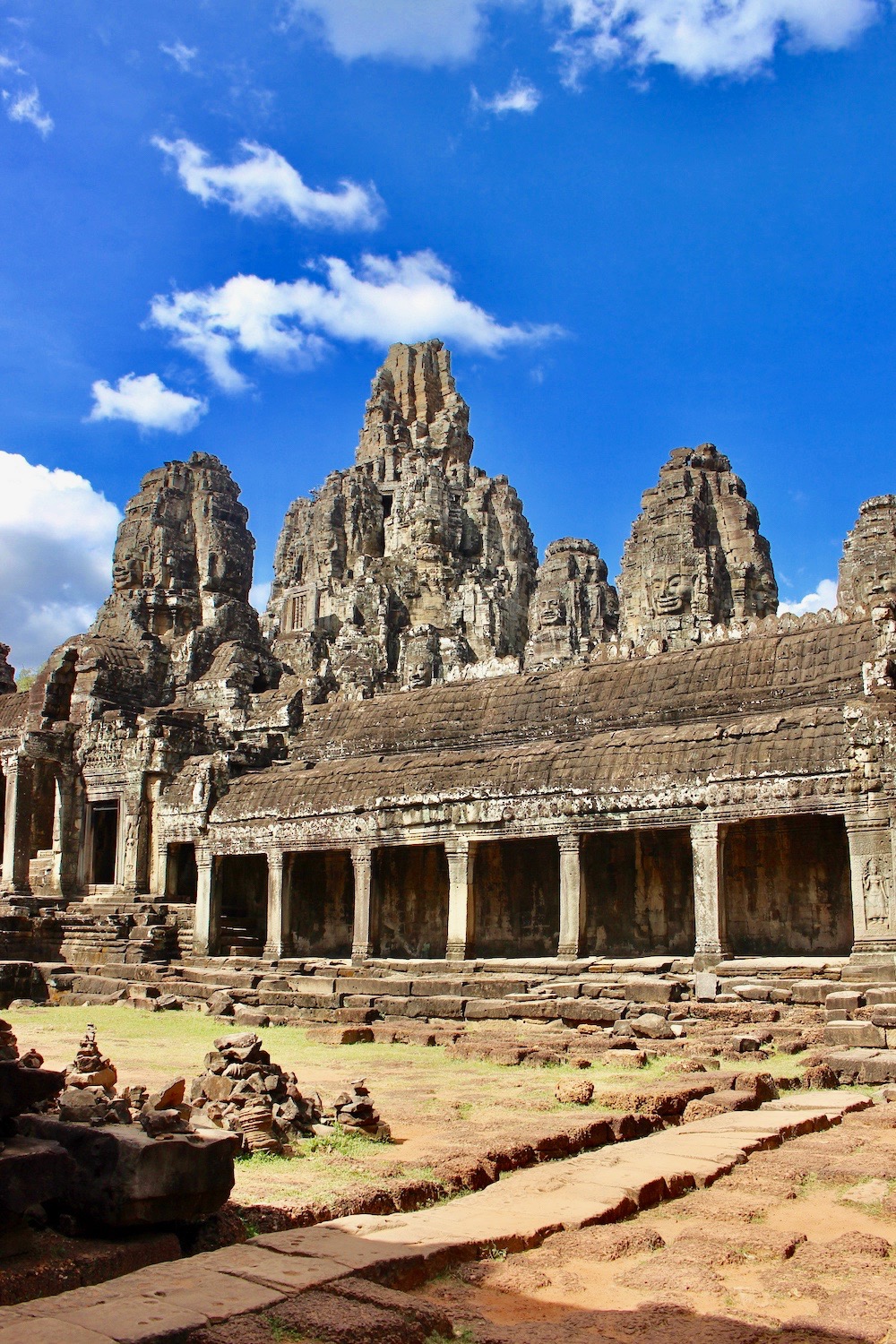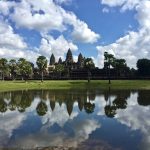Siem Reap is visited for one main reason only, it’s ruins! It has thousands of them and you could spend weeks seeing every temple & construction, they’re all so different, made from various materials, heights, angles and designs. We visited about 8 different sights, but my favorite were as follows.
- Angkor Wat. To me this was definitely one of the top temples of the whole trip, since you get there you feel as if you’re entering a whole new world, full of trees, plants and monks walking past you. I was enchanted by the idea that you enter the temple from behind, not from the front, so as you’re leaving the main area you can finally see the postcard view of Angkor Wat with it’s reflection on the water beside it.
- Bayon Temple: In case you’ve never heard of this place, the Bayon Temple is one of Siem Reap’s most famous ruins because it’s quite different from the others. This temple is designed completely of stones with faces carved in them, so you can turn around to any angle and find faces everywhere, all types of sizes, shapes and forms. Besides, you don’t even realize that it’s carved like this until you’re inside and you turn around and see a 2m face beside you, believe me, you can get a good scare out of it.
- Ta Prohm: The story of Ta Prohm ruins is probably one of the best I’ve heard, this ruins were as normal as all the other ones in Siem Reap but as the years passed the Tetrameles tree started to grow around the temples and now it’s part of the ruins. The trees have incorporated so much in the temples that if they’re cut down the ruins will fall down immediately, but if they leave them the growth of the tree’s roots will also make it fall (just later). So in few words, the temple will fall eventually, it’s just not up to anyone to decide when.
These were only 3 of the many ruins we visited in Siem Reap, we loved to learn so much about Cambodian ancient architecture and I’m definitely hoping we’ll be able to be back soon.
Open gallery—
Siem Reap es visitada por una principal razón: sus ruinas! Tiene cientos de ellas y podrías pasar semanas o hastas meses conociendo todos los templos y construcciones que hay, todas son tan diferentes y están hechas de todo tipo de materiales, alturas y ángulos! Nosotros visitamos como 8 sitios diferentes, pero mis favoritos fueron los siguientes:
- Angkor Wat: En mi opinión esta fue una de las mejores ruinas de todo el viaje, desde que llegas sientes que estás entrando a un mundo completamente diferente lleno de palmeras, árboles, plantas y monjes vestidos de naranja que caminan alrededor de ti. Estuve fascinada por la idea de que entras por detrás del templo y sales por delante así que cuando porfín estás saliendo puedes realmente admirar la vista de postal (literalmente) de Angkor Wat con el reflejo en el agua (En lo personal yo me quedé sin palabras).
- Bayon Temple: Por si no había escuchado de este templo, Bayon Temple es uno de los lugares más famosos de Siem Reap por una simple razón: está diseñado completamente de piedras que tienen caras talladas en ellas. Es increíble visitar este templo ya que a donde voltees puedes encontrar cientos de caras de diferentes tamaños! Y como si fuera poco, no te das cuenta de que el templo está hecho de esta manera hasta estar dentro de él, así que puedes estar caminando en el centro y darte un buen susto cuando te des cuenta que hay una cara de 2m viéndote directamente a los ojos.
- Ta Prohm: La historia de Ta Prohm es probablemente una de las mejores que he escuchado, estas ruinas eran tan normales como todas las de Siem Reap, hasta que los años comenzaron a pasar y el árbol Tetrameles comenzó a crecer dentro de las ruinas y ahora es parte de ellas. Los árboles se han incorporado tanto a las ruinas que si los cortan estas mismas se caerían, pero si los dejan también se van a caer por el peso de las raíces de los árboles. Así que en pocas palabras las ruinas eventualmente se van a caer, pero no es decisión de nosotros decir cuando.
Estas fueron solo mis 3 ruinas favoritas de las muchas que vimos durante nuestro viaje, nos encantó poder conocer y aprender tanto sobre la arquitectura antigua de Cambodia y esperamos que podamos regresar pronto.

